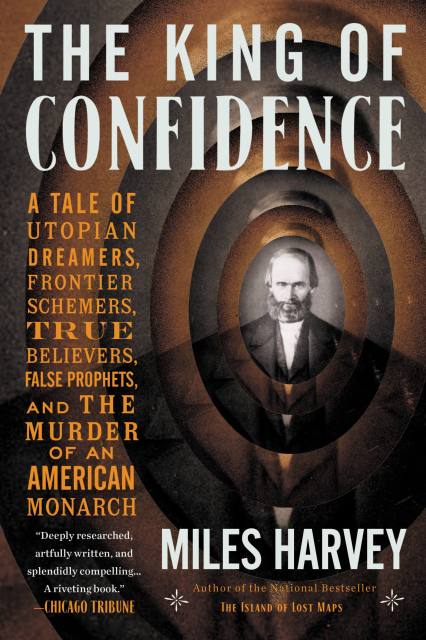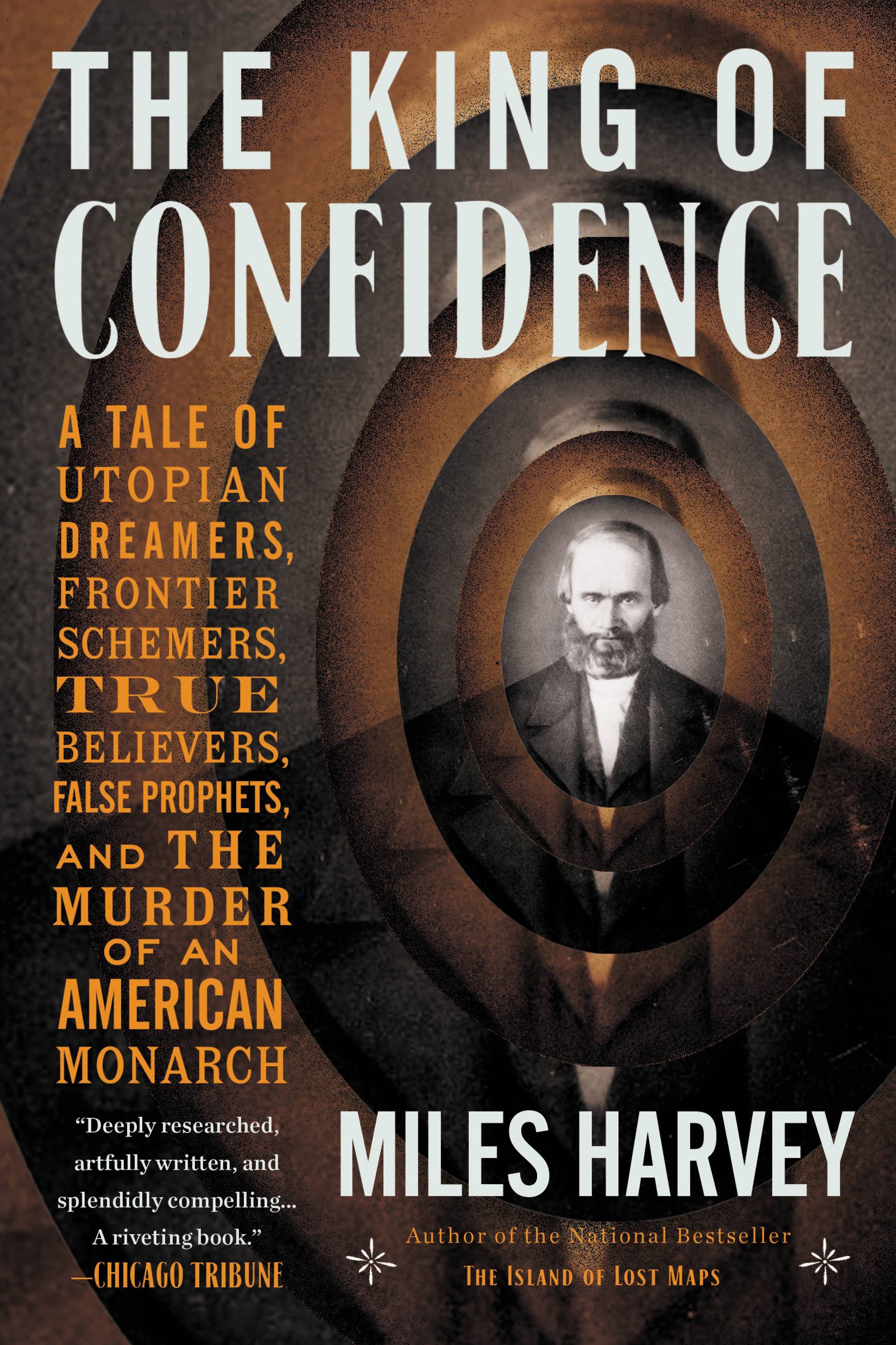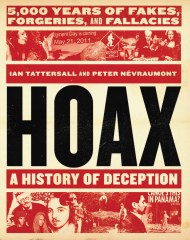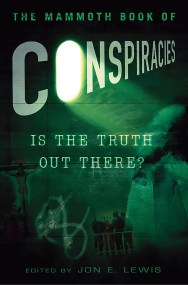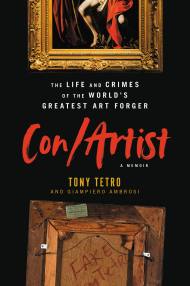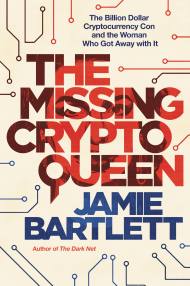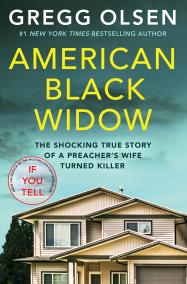Promotion
Use MOM24 for 20% off site wide + free shipping over $45
The King of Confidence
A Tale of Utopian Dreamers, Frontier Schemers, True Believers, False Prophets, and the Murder of an American Monarch
Contributors
By Miles Harvey
Formats and Prices
Price
$12.99Price
$16.99 CADFormat
Format:
- ebook $12.99 $16.99 CAD
- Audiobook Download (Unabridged) $27.99
- Trade Paperback $18.99 $23.99 CAD
This item is a preorder. Your payment method will be charged immediately, and the product is expected to ship on or around July 14, 2020. This date is subject to change due to shipping delays beyond our control.
Also available from:
A New York Times Book Review Editors’ Choice
Longlisted for the 2021 Andrew Carnegie Medal for Excellence in Nonfiction
Finalist for the Midland Authors Annual Literary Award
A Michigan Notable Book
A CrimeReads Best True Crime Book of the Year
"A masterpiece." —Nathaniel Philbrick
In the summer of 1843, James Strang, a charismatic young lawyer and avowed atheist, vanished from a rural town in New York. Months later he reappeared on the Midwestern frontier and converted to a burgeoning religious movement known as Mormonism. In the wake of the murder of the sect's leader, Joseph Smith, Strang unveiled a letter purportedly from the prophet naming him successor, and persuaded hundreds of fellow converts to follow him to an island in Lake Michigan, where he declared himself a divine king.
From this stronghold he controlled a fourth of the state of Michigan, establishing a pirate colony where he practiced plural marriage and perpetrated thefts, corruption, and frauds of all kinds. Eventually, having run afoul of powerful enemies, including the American president, Strang was assassinated, an event that was frontpage news across the country.
The King of Confidence tells this fascinating but largely forgotten story. Centering his narrative on this charlatan's turbulent twelve years in power, Miles Harvey gets to the root of a timeless American original: the Confidence Man. Full of adventure, bad behavior, and insight into a crucial period of antebellum history, The King of Confidence brings us a compulsively readable account of one of the country's boldest con men and the boisterous era that allowed him to thrive.
Genre:
-
“A jaunty, far-ranging history... Despite the frontier setting, there is something eerily contemporary about Harvey’s portrait of a real estate huckster with monarchic ambitions, a creative relationship to debt, and a genius for mass media... Harvey deploys small scraps of knowledge to great effect. His account of Strang’s rise and fall is littered with thumbnail histories of nineteenth-century cross-dressing, John Brown, John Deere, the Brontës, bloomers, the Underground Railroad, mesmerism, newspaper exchanges, the Illuminati, and much else. This approach amounts to a sort of historical pointillism, bringing the manic, skittering mood of the era into focus. It is a style of history well suited to the antebellum decades, when American culture was most unabashedly itself... Harvey’s wonderfully digressive narrative is interspersed with news clippings, playbills, land surveys, and daguerreotypes, as if to periodically certify that all of this madness is really true... Rather than a biography of a single man, he offers a vivid portrait of the time and place in which a character like Strang could thrive.”Chris Jennings, New York Times Book Review
-
“Harvey is a skillful writer and thoughtful researcher... He examines the bedeviled society [of antebellum America] through the life of James Jesse Strang, a strange man of many parts---most of them bad.”Howard Schneider, Wall Street Journal
-
"The story of James Strang--a messianic con man who wreaks havoc on an island community of his own devising--is amazing in itself. But it is the telling of the tale--think Herman Melville meets Mark Twain--that makes The King of Confidence a masterpiece. This book has talons that sink into you and won't let go."Nathaniel Philbrick, New York Times bestselling author of In the Heart of the Sea and Mayflower
-
“Deeply researched, artfully written, and splendidly compelling... Great writers deserve great subjects, and Miles Harvey, who has proven himself a great writer in two previous books, has found another subject worthy of his skills... A riveting book.”Rick Kogan, Chicago Tribune
-
“Harvey’s entertaining history… chronicles a manic, anxious, gullible time, not unlike our own.”New York Times Book Review
-
"The King of Confidence is that rarest of gems: gorgeously written, impeccably researched, and completely addictive. Miles Harvey has written one of the best books of the year. But don't take my word for it. Read it!"Jonathan Eig, New York Times bestselling author of Ali: A Life and Luckiest Man Alive: The Life and Death of Lou Gehrig
-
"The King of Confidence is a ludicrously enjoyable, unputdownable read--a book with unsettling (but also weirdly comforting) parallels to our time. By illuminating this forgotten moment in American history, where a group of rational adults fell under the spell of a charismatic madman, Harvey reminds us of the endlessly repeating nature of history and humanity."Dave Eggers, National Book Award finalist and New York Times bestselling author of Zeitoun and What Is the What
-
"A rollicking story ripe for a Hollywood treatment."Vanity Fair
-
“Miles Harvey's meticulously researched tale The King of Confidence brings alive the bizarre and chaotic arc of Strang's life… America's history is rich with tales of frauds and fakers who successfully bamboozled their fellows. In Harvey's lively and insightful book, he shows why Strang deserves to be remembered as a prime exemplar of the type.”John Reinan, Minneapolis Star Tribune
-
"Harvey serves up what promises to be a page-turner about this bizarre moment in Michigan history where fair Beaver Island served as an epicenter of fraud, polygamy and piracy."Jennifer Day, Chicago Tribune
-
"Harvey delivers a vivid account of the life and times of American sect leader, lawyer, newspaper editor, and con man James Jesse Strang... He paints antebellum America as a time of 'excesses and delusions' and skillfully explores the era's technological advances, rising immigration, political violence, religious fervor, and leading literary figures. This evocative tale will astonish and delight fans of American history."Publishers Weekly (starred review)
-
“Is James Strang the most infamous American con man you’ve never heard of? That’s the question animating Harvey’s biography of the opportunist prophet-king, a convert who persuaded the Mormons who did not follow Brigham Young to Utah to join him on Michigan’s Beaver Island. Strang’s authoritarian rule may have done him in, but Harvey’s marvelous rendering of this con man in fraught antebellum America may have a particular resonance today.”National Book Review
-
“The King of Confidence reads akin to the best of thriller fiction. The true nature of the book renders the events all the more shocking and makes for an impactful read. Miles Harvey has done a masterful job bringing the past to life, narrating the whirlwind rise and fall of a true confidence man.”City Book Review
-
"Vividly portrayed... Miles Harvey specializes in true stories of audacious individuals, here attaining new heights of wonderment... Writing with electrifying pleasure in discovery, Harvey zestfully captures 'the carnivalesque atmosphere' of antebellum America... Deftly performing a fresh and telling analysis of the timeless power of the con man over Americans who worship those who invent their own rules and 'their own truths,' Harvey brings to galloping life a forgotten, enlightening, and resounding chapter in America's tumultuous history of searchers and charlatans."Donna Seaman, Booklist (starred review)
-
"Flip this book open, read page one, and then try to stop. The King of Confidence is mesmerizing all the way through--a quirky, rollicking ride through an America marked by upheaval, tumult, and religious fervor. It feels like one of those dystopian futures that Hollywood keeps warning us we're hurtling toward, but it's actually our own forgotten past. What this startling book cleverly illuminates, though, is our own perilous present, where so many of us still yearn for con men and kings."Dave Cullen, New York Times bestselling author of Columbine
-
“Harvery… is a remarkable sleuth, a writer with a passion for maps and islands and the patience to tell a complicated story.”Ann Fabian, National Book Review
-
"A riveting tale told in lively prose and gripping anecdotes... Harvey is a master storyteller, and his skills are in full display."Benjamin E. Park, Religion News Service
-
"Wooly and wild, as artful as scrimshaw, The King of Confidence literally had me at the table of contents, and never let go. What an immense pleasure to be in the hands of so deft a storyteller, to be swept away by the richest kind of story, one that veers back to a historical moment while capturing America today, our pixie-dust delusions and national gullibility in the face of old-fashioned hucksterism. Miles Harvey is a literary treasure; he's added his best-yet to a growing heap of masterpieces."Michael Paterniti, New York Times bestselling author of The Telling Room and Driving Mr. Albert
-
“James Strang is my new favorite ne’er-do-well of history: a con artist for the centuries... Please read this book. It’s the most fun you’ll ever have reading about the 1840s... Enjoy this wild tale.”Molly Odintz, CrimeReads
-
“Over several hundred exhaustively researched pages, Harvey presents an account of Strang’s life that plays out like a classic narrative of ambition, transgression, success, and, ultimately, failure.”Patrick Sullivan, Northern Express
-
“Fascinating… Harvey, in a nonjudgmental style, sorts out reality from myth when recounting Strang’s bizarre life.”Bill Castanier, Lansing City Pulse
-
"Miles Harvey masterfully relates one of the great unknown chapters of our nation's history, one of those peculiarly American tales where faith, madness, and old-fashioned flimflammery converge to stunning effect. The story of James Strang, con man extraordinaire, is wildly amusing in its exposure of the stone-cold gullibility of our forebears, but also unsettling in its eerie echoes of our current national landscape, and the realization that very little has changed. The King of Confidence is a marvelous read."Scott Anderson, author of the New York Times bestseller and National Book Critics Circle Award finalist Lawrence in Arabia
-
“In this year of remote work and canceled vacation plans, the most engrossing virtual trip I’ve embarked on transported me to a Mormon kingdom on a Lake Michigan island during our nation’s antebellum era. And it’s an outstandingly entertaining excursion.”Margaret Fosmoe, Notre Dame Magazine
-
"Perfect for fans of Devil in the White City... Harvey's narrative is a page-turning exercise in popular history... A nicely spun yarn of religious chicanery on the frontier in a nearly forgotten historical episode."Kirkus Reviews
-
"A spirited, entertaining read with a twist of insight and a tang of scandal... Harvey has penned a tour de force of popular history."Library Journal
- On Sale
- Jul 14, 2020
- Page Count
- 416 pages
- Publisher
- Little, Brown and Company
- ISBN-13
- 9780316463584
By clicking 'Sign Up,' I acknowledge that I have read and agree to Hachette Book Group’s Privacy Policy and Terms of Use
